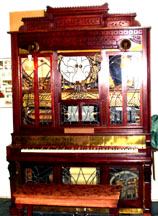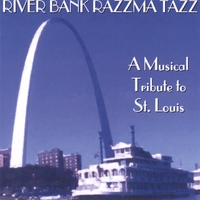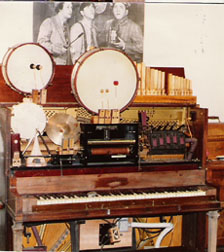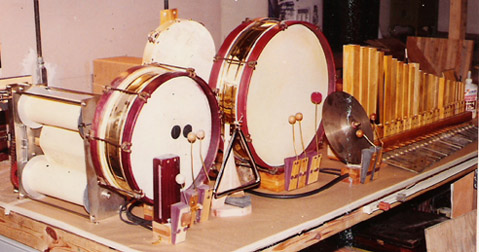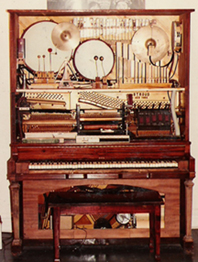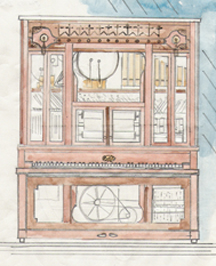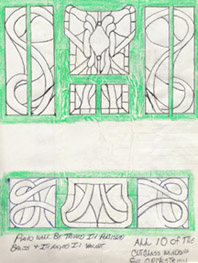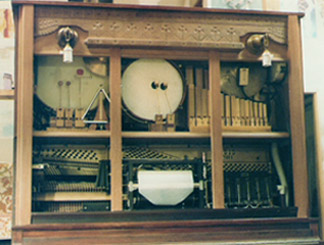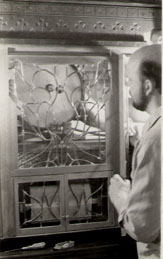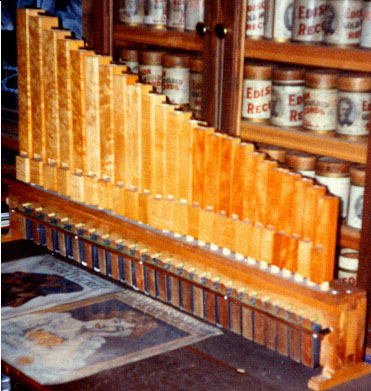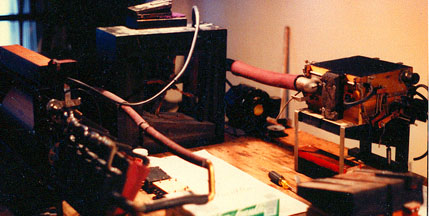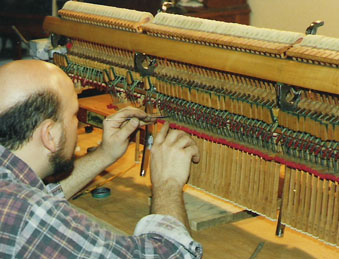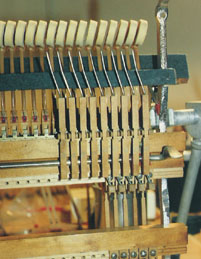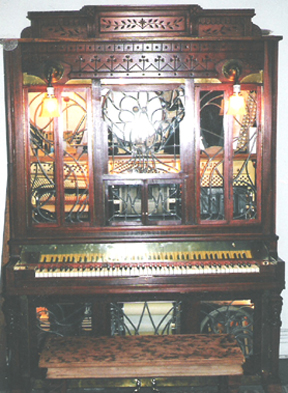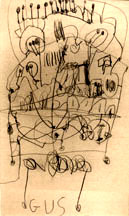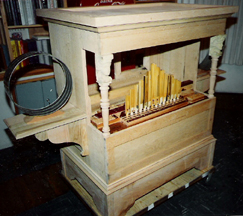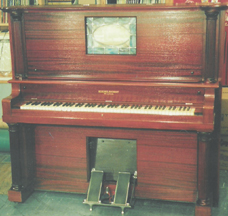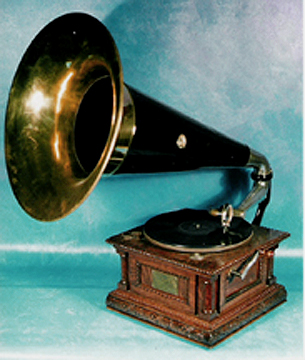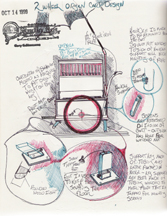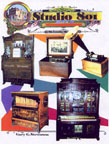In order to show the scope of work that can be performed at the studio, I designed and built a type of player piano called an "Orchestrion." An orchestrion is a self-playing or mechanical orchestra. My orchestrion has 10 working playing musical instruments and was styled after the concept of the Operators Piano Company's Coinola, (model "CO".)
I had gotten a broken down "Stroud" up-right player piano from a friend in exchange for a custom stained glass window. This piano was not working, it was not even complete. In its past, someone was going to "fix-it," and they did. It had been a failed restoration attempt of a "non-mechanical music based wood-butcher." The piano had no white key tops left on it, it had no roll frame or air motor and it was missing, nearly all of the player piano's operating linkage. At first, I restored my new piano as a regular 88 note player, and did have it working in that form for a short while. I got it playing with the help of a modified Schultz roll frame and wind motor.
